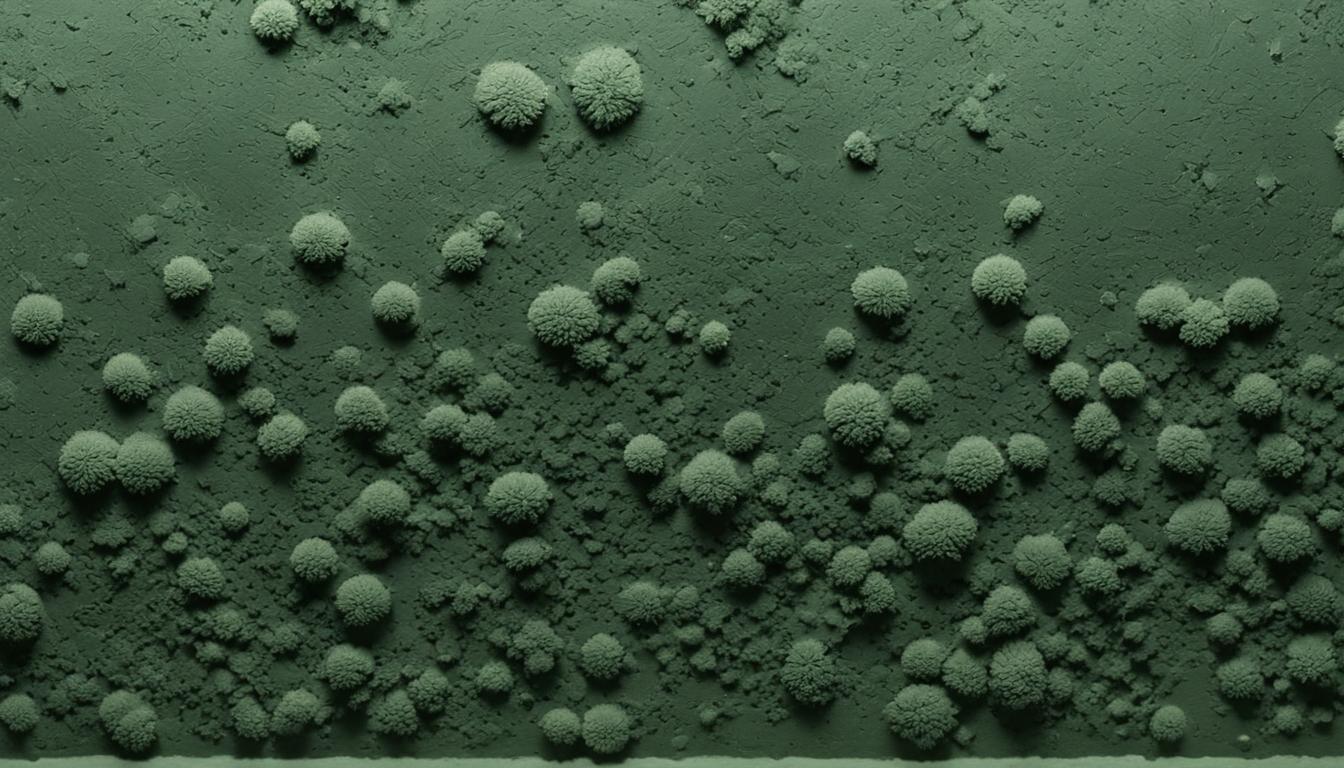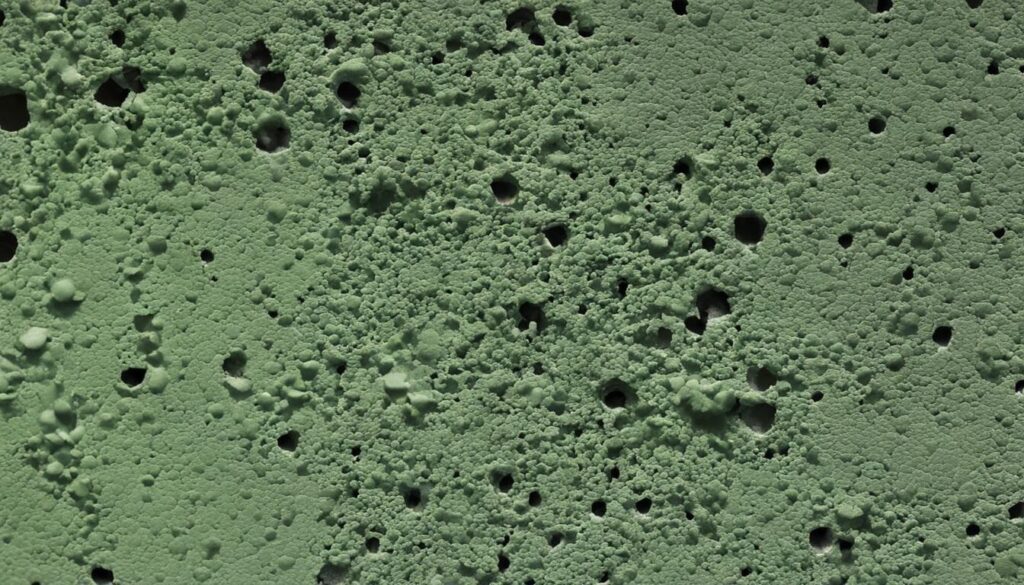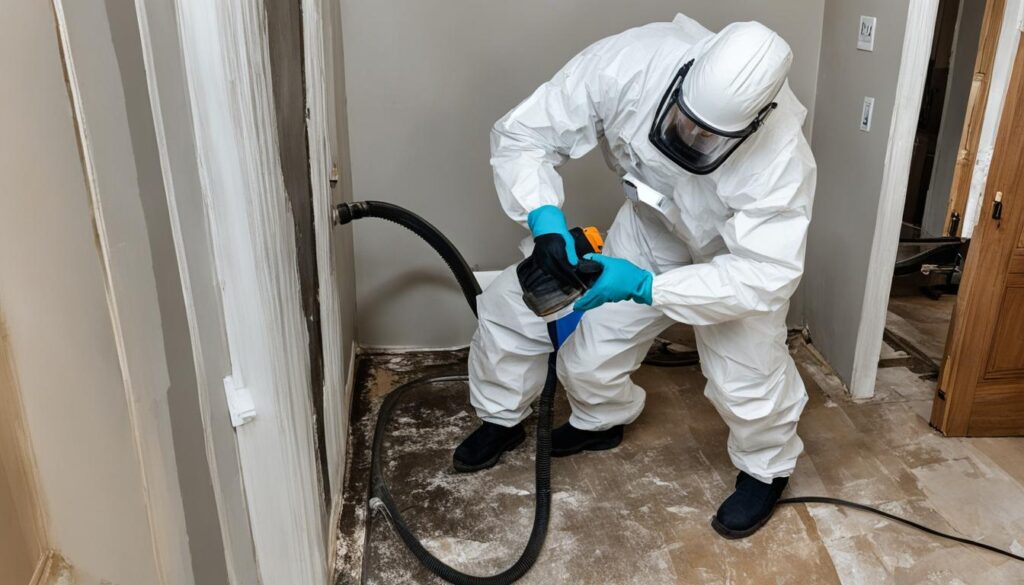
Understanding Chaetomium Mold Risks & Removal
If you’re concerned about the air quality in your home or workplace, it’s crucial to stay informed about potential mold risks. One type of mold that people should be aware of is chaetomium mold. This mold can be hazardous to your health, and it’s important to know how to identify and remove it safely and effectively.
Chaetomium mold belongs to a group of fungi that commonly grows in water-damaged environments like basements, bathrooms, and kitchens. While it can appear green, white, or gray, it’s usually recognized by its characteristic cottony texture and earthy smell. There are several different species of chaetomium mold, but they all pose similar health risks when present indoors.
In this article, we’ll explore the dangers of chaetomium mold and provide tips on how to identify and effectively remove it from your home or workplace. We’ll also discuss the importance of proactive prevention strategies to ensure it doesn’t return.
Key Takeaways:
- Chaetomium mold can pose a serious health risk if left untreated.
- Identifying chaetomium mold requires understanding its distinguishing characteristics.
- Preventing chaetomium mold growth involves controlling moisture levels and ensuring proper ventilation.
- Removing chaetomium mold requires professional treatment to ensure complete eradication.
- Preventing the recurrence of chaetomium mold involves ongoing maintenance and vigilance to prevent water damage.
The Health Effects of Chaetomium Mold
Exposure to chaetomium fungus can lead to a range of health problems, particularly for individuals with pre-existing respiratory conditions. Symptoms of chaetomium exposure include:
- Eye irritation and redness
- Nasal congestion
- Coughing and sneezing
- Headaches
- Wheezing and shortness of breath
- Fever and flu-like symptoms
In rare cases, chaetomium exposure can lead to more severe health effects, such as lung infections and neurological problems.
People most at risk for chaetomium-related health effects include infants, elderly individuals, and those with weakened immune systems. Additionally, individuals who work in environments where chaetomium mold is present, such as farmers, construction workers, and healthcare professionals, are more susceptible to exposure.
If you suspect you have been exposed to chaetomium mold, seek medical attention immediately.
Identifying Chaetomium Mold
To effectively address chaetomium mold, it’s essential to first identify its presence in your environment. Chaetomium is a type of mold commonly found in water-damaged buildings, particularly those with high humidity levels or inadequate ventilation. Identifying chaetomium requires a keen eye for its unique characteristics.
Chaetomium Species
Chaetomium mold often appears as white or grayish cotton-like clusters that eventually turn to light brown or olive-green as it matures. This mold releases a less noticeable musty odor compared to other mold species. Chaetomium species prefer wet and poorly ventilated areas such as attics, basements, or homes that have experienced water damage.
To better distinguish between chaetomium and other mold species, it’s recommended to identify it in the presence of a professional. They will perform a thorough inspection and testing of the air, surfaces, and surrounding environment.
Recognizing the Presence of Chaetomium
To recognize chaetomium in your environment, watch for signs of water damage such as leaks, water stains, or discoloration on walls. Chaetomium typically grows in a circular pattern, forming a “fuzzy” layer on permeable surfaces like drywall or ceilings. You may also notice a dark or black-colored center in the mold patch.
It’s important to note that the appearance of chaetomium can differ from one location to another, so relying solely on visual identification may not be enough. Regular mold inspections and testing are vital to ensure early detection and prevention.

Chaetomium Growth Conditions
Chaetomium mold thrives in environments with high moisture levels and poor ventilation. The ideal temperature for growth is between 15°C and 30°C (59°F to 86°F), but it can still grow in cooler temperatures.
In addition to humidity, chaetomium mold requires a food source to grow. It typically feeds on cellulose-rich materials, such as wood, paper, and plant debris, making homes and buildings susceptible to infestations if these materials are present.
To prevent chaetomium mold growth, it is crucial to control humidity levels in indoor environments. Humidity levels should be maintained below 50% to discourage mold growth. Adequate ventilation and air circulation are also essential to prevent mold from taking root.
Note: If your home or building has experienced water damage, it is important to address it immediately to prevent mold growth. Consult with a professional mold remediation company to assess and mitigate the damage.
The Importance of Chaetomium Mold Prevention
Preventing chaetomium mold from developing in your home or business is essential for maintaining a safe and healthy environment. As with most molds, chaetomium thrives in damp and humid conditions, making moisture control a key factor in prevention.
Here are some effective methods to prevent chaetomium growth:
| Method | Description |
|---|---|
| Monitor Humidity Levels | Using a hygrometer to maintain humidity levels below 60% can greatly reduce the risk of chaetomium growth. |
| Eliminate Leaks | Repair any leaks or water damage as quickly as possible to prevent moisture buildup. |
| Improve Ventilation | Proper ventilation in areas with high moisture, such as bathrooms and kitchens, can help keep the air dry. |
| Reduce Clutter | Eliminating clutter can help improve air circulation and reduce the chances of mold growth. |
Implementing these prevention methods can help minimize the risk of chaetomium mold growth and keep your indoor environment healthy. If you suspect chaetomium growth despite your best prevention efforts, it’s important to seek professional help for effective treatment.
Effective Chaetomium Mold Removal Strategies
If you’ve discovered chaetomium mold in your home or workplace, it’s crucial to take immediate action to remove it. DIY methods may seem tempting, but they often fall short of a comprehensive solution, leaving your property vulnerable to future outbreaks. We highly recommend hiring a professional mold remediation company for effective chaetomium mold removal and treatment.
Professional chaetomium mold removal involves a meticulous and systematic approach to ensure the complete eradication of mold. This includes:
- Identifying the extent of the infestation: A professional mold remediation specialist will conduct a thorough inspection of the affected area, to assess the extent of the chaetomium mold growth and devise an effective removal plan.
- Isolating the contaminated area: The mold remediation team will take steps to isolate the affected area, to prevent cross-contamination, which can cause mold to spread to other parts of your property.
- Removal of mold-infested materials: The remediation team will remove all mold-infested materials, such as carpets, drywall, and ceiling tiles from the property.
Following this, the specialist will take measures to purify the air and dehumidify the area to prevent any future growth.
Finally, the mold remediation team will conduct air samples and tests to confirm that the chaetomium mold has been eradicated completely. This ensures that you can move back into a safe and healthy environment.
Choosing a Professional Chaetomium Mold Remediation Company
When it comes to chaetomium treatment and mold removal, choosing the right company can make all the difference. Here are some factors to consider when selecting a professional mold remediation company:
- Certifications: Look for companies that have certifications from reputable organizations such as the Institute of Inspection, Cleaning and Restoration Certification (IICRC). This ensures that the company follows industry standards and practices.
- Experience: Choose a company with extensive experience in chaetomium mold removal and related services. Ask for references and check online reviews to gauge their reputation.
- Services: Ensure that the company offers comprehensive services, including testing, removal, and prevention. This will provide a more effective and permanent solution to your mold problem.
- Communication: A professional company should be clear and transparent in their communication. They should answer all your questions and provide detailed information about the process and costs involved.

Choosing the right mold remediation company is crucial for effective chaetomium treatment and mold removal. Don’t rush the process, take the time to research and select the best available option.
Preventing Chaetomium Mold Recurrence
After effective chaetomium mold removal, it is crucial to take proactive measures to prevent its recurrence. By implementing the following practical tips, you can maintain a mold-free environment and ensure long-term prevention.
Avoid Moisture Build-Up
Chaetomium thrives in damp environments, so it is essential to keep moisture levels low. Fix any leaks or water damage promptly, and ensure proper ventilation in areas prone to moisture, such as bathrooms and kitchens. Consider using a dehumidifier in damp areas to maintain optimal humidity levels (experts recommend keeping humidity below 60%).
Regular Home Maintenance
Maintaining a clean and well-ventilated home can go a long way in preventing chaetomium mold. Regularly inspect your home for any signs of water damage, mold growth, or condensation. Additionally, consider investing in a quality air purifier and cleaning surfaces with antimicrobial products to keep your home healthy and mold-free.
Professional Inspection
Consider hiring a professional mold inspector to evaluate your home for any potential moisture or mold issues. They can identify and remedy any issues before they become problematic, ensuring your home remains healthy and mold-free.
By implementing these prevention tips, you can ensure long-term chaetomium mold prevention. Remember, prevention is the key to maintaining a healthy home environment.
Conclusion
Chaetomium mold poses a significant risk to human health and should be taken seriously. By understanding the potential health effects of chaetomium exposure, identifying its presence, and implementing effective prevention measures, individuals can protect themselves from harm.
If chaetomium mold is detected, seeking professional help for removal is essential. Professional mold remediation companies have the necessary expertise, equipment, and experience to comprehensively treat chaetomium mold and prevent its recurrence.
Remember, preventing chaetomium mold growth is much simpler than dealing with the aftermath. By keeping a vigilant eye on moisture levels and practicing good hygiene habits, you can maintain a mold-free environment and ensure the health and wellbeing of yourself and those around you.
FAQ
What is chaetomium mold?
Chaetomium mold is a type of fungus that commonly grows in areas with high moisture levels. It typically appears as a cotton-like growth with a white or pink color. Chaetomium mold can be found in various environments, including homes, offices, and even outdoor spaces.
What are the health effects of chaetomium mold?
Exposure to chaetomium mold can lead to a range of health effects. These may include allergic reactions, respiratory issues, skin irritation, and eye infections. People with compromised immune systems or pre-existing respiratory conditions may be more susceptible to these health risks.
How can I identify chaetomium mold?
Chaetomium mold can be identified by its distinctive characteristics. It typically has a cottony texture and may produce a musty smell. The mold’s color can vary, ranging from white to gray to pink. If you suspect the presence of chaetomium mold, it is recommended to consult a professional for a proper assessment.
What are the ideal growth conditions for chaetomium mold?
Chaetomium mold thrives in environments with high humidity levels and moisture. It commonly grows on materials such as wood, paper, drywall, and fabrics. Areas with water damage, leaks, or excessive condensation provide a suitable breeding ground for chaetomium mold.
Why is chaetomium mold prevention important?
Preventing chaetomium mold is crucial to safeguarding your health and maintaining a clean living or working environment. By implementing preventive measures, such as keeping humidity levels in check, fixing leaks promptly, and ensuring proper ventilation, you can minimize the risk of chaetomium mold growth.
What are effective strategies for chaetomium mold removal?
Effective chaetomium mold removal involves identifying and addressing the underlying moisture issue. Additionally, physically removing the mold growth and properly disposing of contaminated materials may be necessary. It is recommended to hire professional mold remediation experts to ensure thorough and safe removal.
How do I choose a professional chaetomium mold remediation company?
When selecting a professional mold remediation company, consider factors such as their certifications, experience, and customer reviews. Look for companies that specialize in chaetomium mold treatment and have a proven track record of successful remediation projects.
What can I do to prevent chaetomium mold recurrence?
To prevent chaetomium mold from recurring, it is important to address any underlying moisture issues. This may involve fixing leaks, improving ventilation, using dehumidifiers, and maintaining a clean and dry environment. Regular inspections and prompt remediation of damp areas are also key to preventing recurrence.




